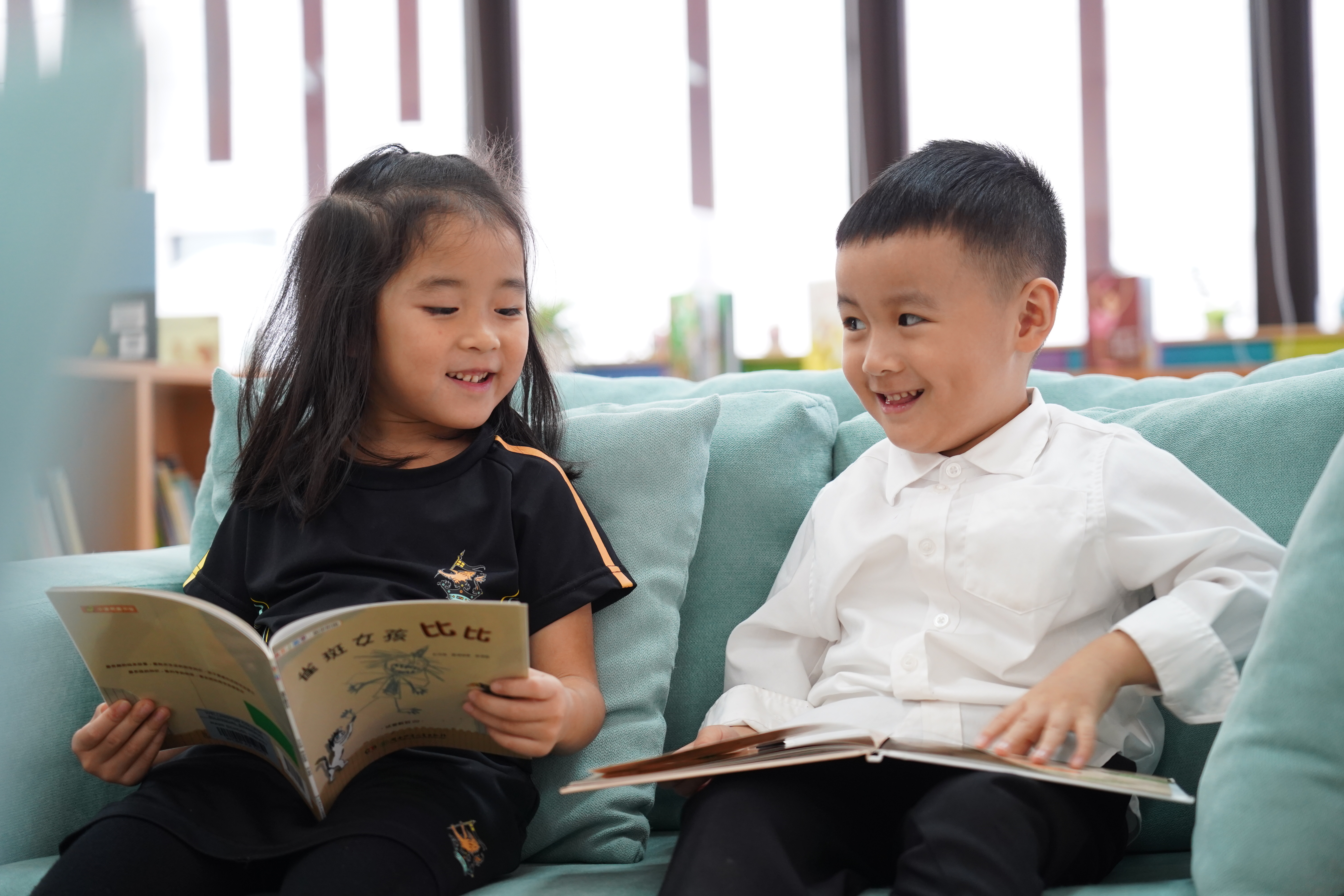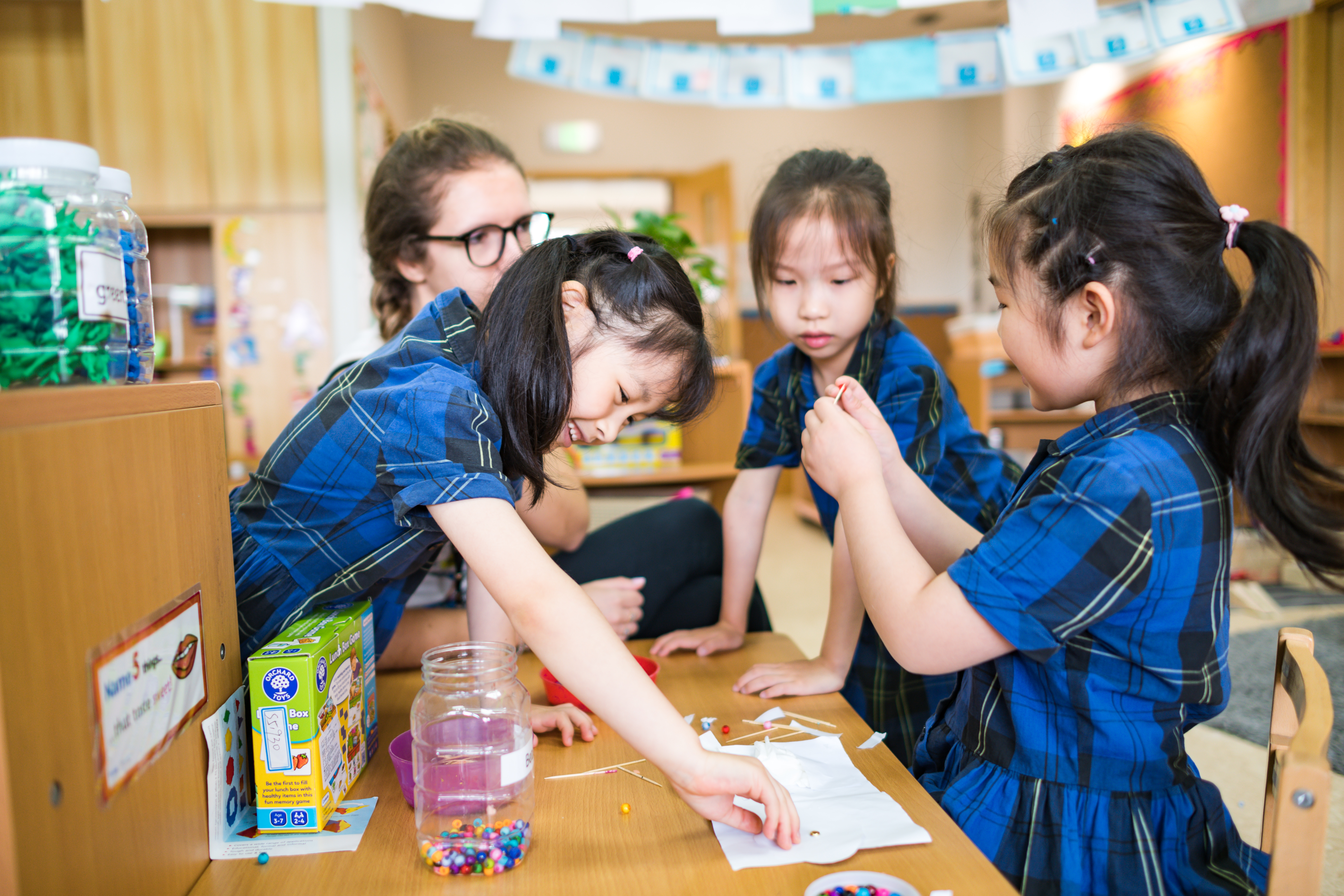
There are so many building blocks that need to put in place before we can expect our children to know the meaning of squiggles they see on a page or to hold a pen and produce their own meaningful marks. TALK TALK TALK Asking a child to pick up a book and readrequires so many skills, skills that most of us have forgotten we even learnt! Which way up does it go? How do I turn the page? What do the pictures mean? A couple of months ago we held some information sessions focused on how to read with your children. One of the points discussed was the importance of speaking.  In the Nursery we do a lot of talking and we encourage the children to do the same. During the day, adults narrate what they are doing and often turn everyday activities into a story. As young children love to imitate the things they see and hear regularly, the narration modelled by the adults around them begins to become part of their play.
In the Nursery we do a lot of talking and we encourage the children to do the same. During the day, adults narrate what they are doing and often turn everyday activities into a story. As young children love to imitate the things they see and hear regularly, the narration modelled by the adults around them begins to become part of their play.  Construction bricks become castles, lions become kings, tiny glass pebbles become huge waves and the children begin to talk about the ideas they have in their heads. Our young learners can be enthusiastic story tellers when given the right resources and enough time to bring their ideas to life! STONES CAN TELL STORIES If you are lucky enough to have a park or an outside area near where you live, things children find there can be great story telling resources. Go on a scavenger hunt to collect stones of different colours and sizes with your child. When you get home, talk to your child about their favourite story and have a look at the book together.
Construction bricks become castles, lions become kings, tiny glass pebbles become huge waves and the children begin to talk about the ideas they have in their heads. Our young learners can be enthusiastic story tellers when given the right resources and enough time to bring their ideas to life! STONES CAN TELL STORIES If you are lucky enough to have a park or an outside area near where you live, things children find there can be great story telling resources. Go on a scavenger hunt to collect stones of different colours and sizes with your child. When you get home, talk to your child about their favourite story and have a look at the book together.

Who are the characters? What happens in the story? What is your favourite part? Using the stones as paper, have a go at drawing the answers to these questions. You can use the stones when they are finished to tell the story in the same way you would use the pictures in a book! STINKY SOCKS Do you have any odd or old socks hanging around in the back of the draw? Why not use them to create a sock puppet! Talk to your child about who, or what, the sock could become; an animal, their favourite superhero, a member of their family etc.

Using any creative materials you have at home (you only need paper and pencils!) turn your sock into something new. Show your child how to make the sock puppet come to life. You could use different voices, make them move in different ways and have them engage in silly conversations with other people. This kind of activity helps your child to engage in role play and imagine how someone else might talk and think. READING, READING, EVERYWHERE We all know that fostering a love for books is one of the greatest things we can do for our children with regards to developing their literacy skills. Reading doesn’t have to be something we only do when sitting on the sofa or lying in bed before we go to sleep. Why not encourage your child to read books in a different place everyday? They could be under the kitchen table, in the wardrobe or even in a den they created using the cushions from the sofa. Literacy isn’t something we need to make our children sit down and ‘do’ in a classroom. Literacy can be a fun part of their lives wherever they are and whatever they are doing; all we need is a bit of creativity and imagination.